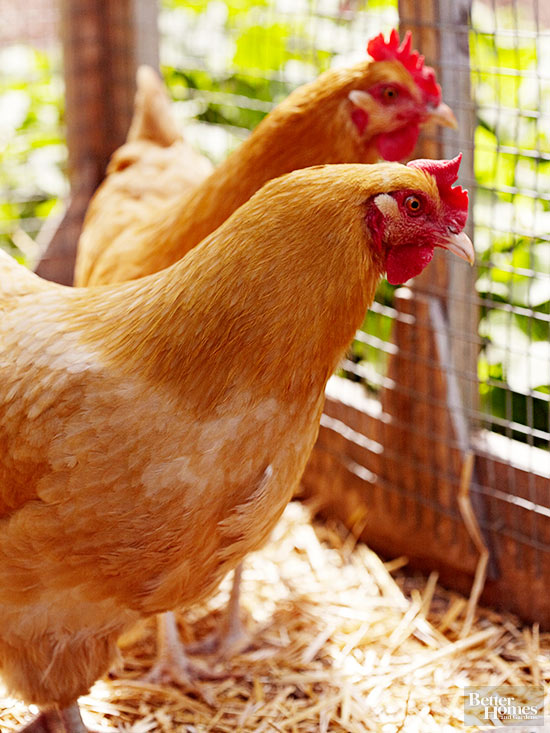






When Rob Ludlow, coauthor of Raising Chickens For Dummies and Building Chicken Coops For Dummies, created the Backyard Chickens online community forum in 2007, it had 50 members. Today, there are 200,000 members, a testament to the increasing enthusiasm for raising and caring for laying hens — and creating chicken coops. "There is a growing awareness of how fun and easy it is to raise backyard chickens," Ludlow says. "People are quickly realizing that chickens are a multipurpose pet: Chickens eat the bugs and weeds in your yard, generate fantastic fertilizer, and of course, make you breakfast."
If you're thinking of diving into the world of homegrown chickens and eggs and need to build a chicken coop, here are some helpful tips from Ludlow.
What Does a Chicken Coop Do?
There are two types of chickens -- those that are used primarily for meat and those that lay eggs. Most backyard chicken coops provide a spot to roost and shelter. "A coop is primarily providing protection from predators and the elements," Ludlow says. "In addition, the coop also will have roosting bars for all the chickens and nest boxes for egg-laying hens."
Some people let chickens have free rein in a fenced-in yard, while others have a chicken coop run attached to the coop itself. What you need and want probably depends on how much time and interest you have, as well as laws and ordinances in your community.
How to Build a Chicken Coop
Raccoons, rodents, and other wildlife not only can steal eggs, they can kill chickens. "Raccoons are incredibly smart, strong, and have very dexterous fingers," Ludlow says.
If you're investigating your own chicken coop plans, be wary of an old invention still in use: chicken wire. "Chicken wire was created to keep chickens in, not to keep predators out," Ludlow says. "The better choice is hardware cloth or welded wire or a combination of the two."
The chicken coop needs to be fully enclosed with its door secured at night to ward off animals, as well as to protect the chickens against inclement weather -- heat, rain, snow, hail. Operable windows, or those that can be covered with hardware cloth, are essential, too, Ludlow says, as is bedding material, such as dried pine shavings to cover the floor. For real luxury and convenience, consider an automated door that opens in the morning and closes at night, Ludlow says. "They have made chicken maintenance infinitely easier and less risky for the chickens," he says.
You'll also have to do some calculating based on the number of hens you want to have. The chicken coop will need enough roosting space and nesting boxes for the breeds of chickens. "Depending on where your chickens will be spending their time, they may also need ample access to food and water from inside the coop," Ludlow says.
How Big Does a Chicken Coop Need to Be?
That depends: In general, Ludlow recommends about 3 to 4 square feet per chicken inside the coop. For an outside run that's attached to a chicken coop, Ludlow recommends about 10 square feet per chicken.
Where do I Need to Place a Chicken Coop?
Chicken coops can sit directly on the ground; some owners choose to elevate them, using an angled runway to provide access to the ground. No matter what you decide, it's important to keep predators, weather, and ease of access in mind, Ludlow says.
Will the Cold Affect Chickens in the Chicken Coop?
Ludlow has found that laying chickens are remarkably resilient to the cold. The chicken coop should be draft- and moisture-free; in very cold climates, insulation and supplement heating may be needed.
Copyright © www.100flowers.win Botanic Garden All Rights Reserved